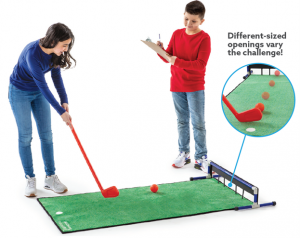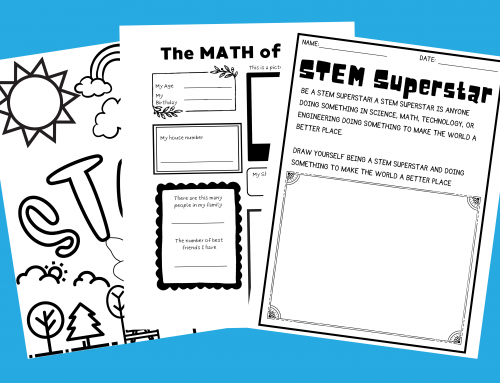STEM education has been built on the idea that students learn best by exploring complex science, technology, engineering, and math ideas through hands-on and inquiry-based methodologies. However, the “M” in STEM is not always treated the same way as the other STEM concepts. Mathematics by nature is not the most hands-on field, oftentimes, relying on just a paper and a pencil instead of something more fun and engaging like a science lab. But there are many ways to make math more accessible, engaging and memorable for students! Here are five approaches to explore math concepts in a more exciting way.
1. Bring Word Problems to Life
A common way to build algebraic thinking in students is with word problems. Oftentimes, these word problems use real-world examples. Consider this word problem: “John has three apples and Sally has two apples. How many apples do John and Sally have together?” In this example, students can conceptualize apples as a common item they are familiar with. Since word problems are often using common items (apples, socks, muffins, etc.), you have the ability to bring those items into your classroom. Therefore, students can use the items from the problem in real-time to work through the solution.
 2. Take Learning Outside
2. Take Learning Outside
Math is the language for science, technology, and engineering. By nature, this means math can be found all around us! There are many different ways to bring math learning outside. Challenge students to find geometric patterns outside with a geometry scavenger hunt by looking at building architecture, plants, walkways, and more. Take a bucket of chalk outside and do math problems on the sidewalk – you can even turn hopscotch into an addition and subtraction game! Bring tape measures and rulers outside and have students measure the sizes and angles of the different objects they encounter. Math does not need to be contained to the four walls of your classroom!
3. Make Math Active
Research shows that physical activity promotes better memory and learning. You can teach math concepts by exercising the brain and the body! This ProbabiliTEE Putt Putt Kit introduces probability through golf. You can also challenge students to a math relay race, collecting numbers to form different equations. Additionally, students can try their hand at a multiplication beanbag toss, letting their throwing skills dictate the problems they solve.

4. Bring the Arts into Math Class
Understanding geometry is a huge part of math. With all the different shapes, angles, and configurations, students can create artistic renderings to express mathematical relationships. Allow students to use a spirograph to find ratios between the different shapes they draw. Use a pantograph to amplify drawings while learning about scale. Even classics like tangrams and geoboards allow students to create pictures and designs.
5. Don’t Underestimate the Power of Puzzles
Puzzles are a great way to teach math concepts like logic and spatial reasoning while also exercising 21st-century skills like teamwork and critical thinking. The solutions to most puzzles can be found algebraically as well. Oversized puzzles allow students to apply math concepts while engaging in a memorable experience. Try an oversized Soma puzzle to introduce patterns and structure or a large Tower of Hanoi to convey sequencing.

Looking for more math tools for your classroom? Check out these active and engaging math products!







Leave A Comment